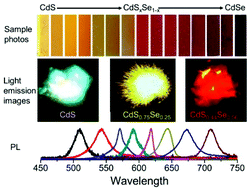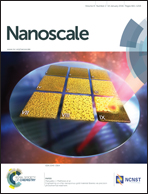The excitonic photoluminescence mechanism and lasing action in band-gap-tunable CdS1−xSex nanostructures
Abstract
Bandgap tunable semiconductor materials have wide application in integrated-optoelectronic and communication devices. The CdS1−xSex ternary semiconductor materials covering green–red bands have been reported previously, but their basic band-gap and optical properties crucial to the performance of the CdS1−xSex-based optoelectronic devices have not been deeply understood. In this paper, we theoretically simulated and discussed the feasibility of bandgap-tunable CdS1−xSex nanomaterials for designing wavelength tunable microlasers. Then we fabricated the CdS1−xSex nanobelts with their band gap ranging from 2.4 to 1.74 eV by adjusting the composition ratio x in the vapor-phase-transport growth process. The temperature-dependent photoluminescence and exciton-related optical constants of the CdS1−xSex nanobelts were carefully demonstrated. Finally, the wavelength-tunable Fabry–Perot lasing in CdS1−xSex nanobelts was obtained, and the Fabry–Perot lasing mechanism was numerically simulated by the FDTD method. The systematic results on the mechanism of the tunable band gap, exciton properties and lasing of the CdS1−xSex nanostructure help us deeply understand the intrinsic optical properties of this material, and will build a strong foundation for future application of green–red wavelength-tunable CdS1−xSex microlasers.


 Please wait while we load your content...
Please wait while we load your content...